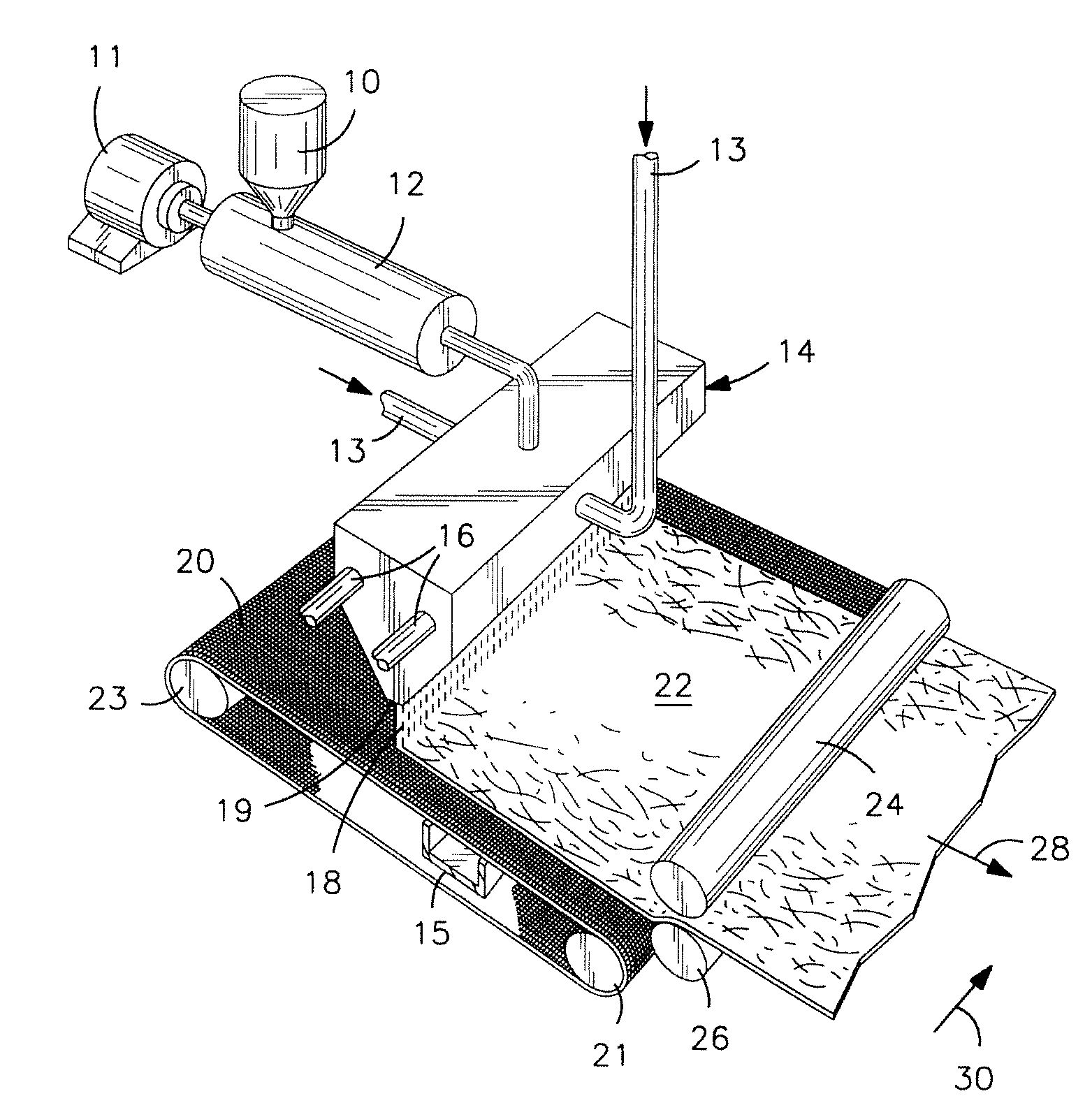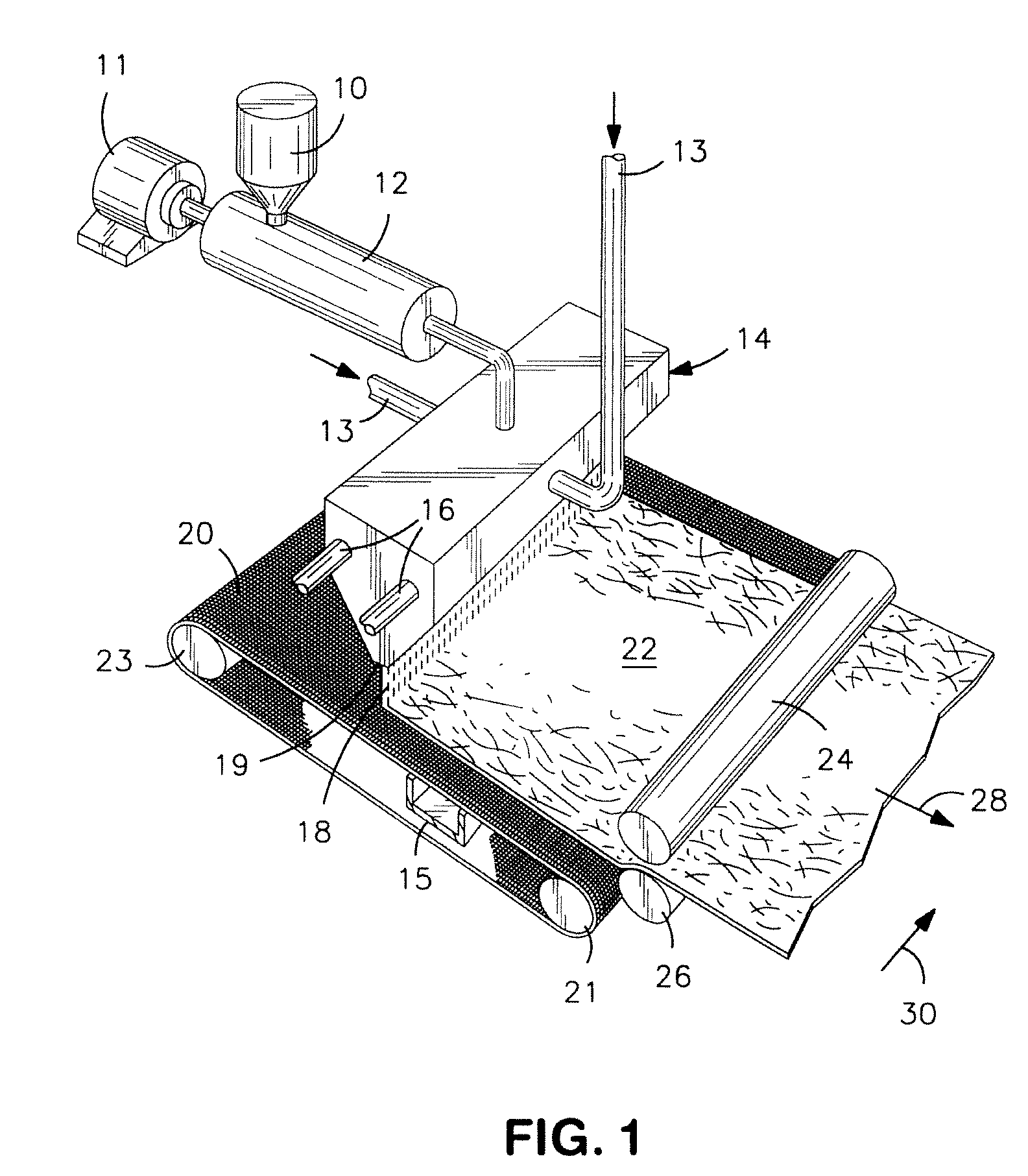Fibers Formed from Aromatic Polyester and Polyether Copolymer
- Summary
- Abstract
- Description
- Claims
- Application Information
AI Technical Summary
Problems solved by technology
Method used
Image
Examples
example 1
[0090]The ability to modify virgin polyethylene terephthalate (“PET”) (CRYSTAR® 4434 from DuPont, which is obtained from the reaction of dimethyl terephthalate and ethylene glycol) with a PEG-PPG-PEG block copolymer (PLURONIC® F-68, BASF) was demonstrated. Prior to use, the CRYSTAR® 4434 resin was pre-dried at a temperature of 170° F. overnight to a moisture content of 50 ppm or less. A co-rotating, twin-screw extruder (ZSK-30, diameter of 30 mm, length of 1328 millimeters) was employed that was manufactured by Werner and Pfleiderer Corporation of Ramsey, N.J. The extruder possessed 14 zones, numbered consecutively 1-14 from the feed hopper to the die. The first barrel #1 received the CRYSTAR® 4434 and PLURONIC® F-68 resins via volumetric feeder at a total throughput of 15-30 pounds per hour. The die used to extrude the resin had 3 die openings (6 millimeters in diameter) that were separated by 4 millimeters. Upon formation, the extruded resin was cooled on a fan-cooled conveyor bel...
example 2
[0092]Samples of the thermoplastic blends of Example 1 were initially dried at 150° F. for 24 hours. Meltblown webs were then formed from the resin samples on a conventional meltblown equipment. During processing, samples were collected as webs of monocomponent fibers under different primary air pressure conditions. A control meltblown web was also formed that contained monocomponent fibers of polypropylene (PF015, Basell North America, Inc. of Elkton, Md.). The conditions for forming the meltblown webs are set forth below in Table 2.
TABLE 2Meltblown Web Processing ConditionsSampleControlABCDEPolymer TypePP 015PET / F68PET / F68PET / F68PET / F68PET / F68Weight (gsm)172626262626Normalized Throughput (lb / in / hour / die tip)111111Extruder Barrel Temperature, ° F.480540540540540540Auxiliary Hose Temp., ° F.480540540540540540Die Tip Primary Air Temp, ° F.470560560560560560Die Tip Attenuation Air Pressure (psi)4108642
[0093]Once formed, various thermal and mechanical properties of the webs are set for...
PUM
| Property | Measurement | Unit |
|---|---|---|
| Temperature | aaaaa | aaaaa |
| Temperature | aaaaa | aaaaa |
| Temperature | aaaaa | aaaaa |
Abstract
Description
Claims
Application Information
 Login to View More
Login to View More - R&D
- Intellectual Property
- Life Sciences
- Materials
- Tech Scout
- Unparalleled Data Quality
- Higher Quality Content
- 60% Fewer Hallucinations
Browse by: Latest US Patents, China's latest patents, Technical Efficacy Thesaurus, Application Domain, Technology Topic, Popular Technical Reports.
© 2025 PatSnap. All rights reserved.Legal|Privacy policy|Modern Slavery Act Transparency Statement|Sitemap|About US| Contact US: help@patsnap.com



